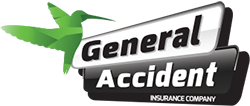Trip Tips: Fluids, lights, brakes, papers and check

Knowing your car’s levels before heading off on a long journey is a great idea. When you drive your vehicle every day, there are some oils and fluids that will be used more than others. While running out wiper fluid might not be detrimental to your trip, the ‘check oil’ light halfway up a mountain can.
Driving Legally
It is illegal to operate a vehicle without a current driver’s licence, proper road licence/registration, certificate of fitness and insurance. A quick, simple check could save you the embarrassment, the possible police stop and the (possibly quite substantial) fines for committing this criminal offence.
Gas/Petrol levels
Running out of fuel can actually damage your car. The fuel injectors (and the fuel pump in diesel engines) can be harmed if a car draws in air instead of fuel. If the vehicle runs out of gas/petrol it can cause blockages to form in the filters due to debris from the fuel tank. This will deteriorate and reduce your car performance and life-expectancy.
Engine oil level
One of the most important things to check before a long journey is the engine oil. As the blood pumping through the heart (engine) of your car, engine oil is essential for the health of the moving internal parts and preventing wear from friction. Ensure that the correct engine oil is used as the wrong lubricant can cause chemical reactions such as corrosion or could damage key components.
Brakes
Checking your brakes before a long trip is very important to the safety of the people in the car and other road users. Safely stopping and controlling the speed of your vehicle is compromised if there are worn brake pads or discs. You should also check the brake fluid levels. Brake fluid should be a light golden brown colour and the level needs to sit between the MIN and MAX marks.
Here are some other checks:
- Windscreen for damage
- Tyre condition for damage tread depth
- Correct tyre inflation levels
- Spare tyres
- Car jack and locking wheel nut key
- Battery levels
- All lights, indicators and hazards are working
- Working wipers
- Coolant and radiator fluid levels
- Power-steering fluid


